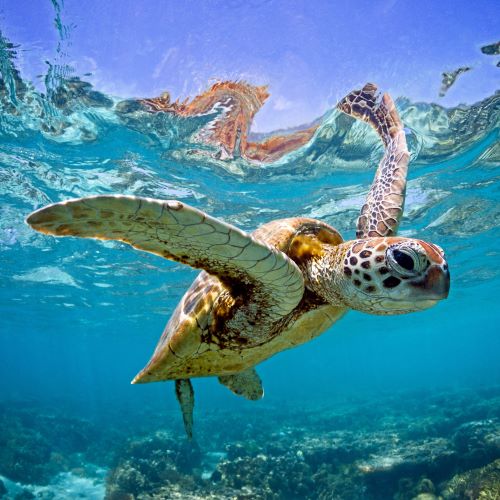19 May 2025

New research shows that Australians care deeply about the Great Barrier Reef (GBR) – one of the Seven Natural Wonders of the World – but 13% can’t tell you where it is located.
A social media survey canvassing Australians’ perceptions of the iconic tourism drawcard also revealed that while most people are aware of the threats facing the world’s largest coral reef, few can name many individual species inhabiting it.
The survey, conducted by University of South Australia (UniSA) researchers and recently published in Marine and Freshwater Research, underscores the need for a targeted public awareness campaign to address knowledge gaps about the fragile ecosystem, according to lead author Jarrah Taylor.
The UniSA environmental science master’s student says that 113 Australians recruited via social media were asked four open-ended questions about the Great Barrier Reef, including where it was located, what species lived in the reef, its importance to Australia, and the major threats facing it.
The survey’s key findings were:
- Most participants (86.72%) correctly named the Queensland coastline as the home of the Great Barrier Reef, but a small number (13%) were either unaware of the location or stated the wrong State.
- Participants commonly identified broad groups such as fish (37%), reptiles (12%) and corals (12%) occupying the GBR, and specific species like clownfish (3.9%), sea turtles and sharks (10%) were mentioned, but participants revealed limited knowledge of species at a more niche level.
- The GBR’s environmental importance was recognised, with 48% of survey respondents citing it as a crucial habitat for various species, 27% naming it as a natural wonder of the world, 44% mentioning it as a major tourism drawcard, and 9% aware of its importance to the Australian economy.
- Participants identified several threats, mostly caused by humans, including runoff, pollution and plastics (36%), climate change (33%), warming oceans (24%) and coral bleaching (34%). Of the 18 threats reported by participants, only three were naturogenic (crown-of-thorns starfish, natural disasters and sea urchins).
Taylor says it is not surprising that fish and coral topped the recognition list for marine life in the Great Barrier Reef.
“Images of both coral and fish have long been used in tourism campaigns dating back to the 1970s,” she says.
“We were not expecting participants to provide the scientific name for individual species, but we were interested to see if they could identify flora and fauna at a more niche level – for example reef sharks, manta rays, giant clams and potato cod. This was not the case.”
The most common specific species identified was the clownfish, most likely owing to media portrayals in Finding Nemo, a 2003 animated adventure film inspired by the Great Barrier Reef.
“This shows the power of digital media and popular culture in raising awareness of charismatic species, which can lead to conservation support,” Taylor says.
UniSA senior author Dr Brianna Le Busque says that only three species classified as endangered were identified by participants – the green turtle, staghorn coral, and the hammerhead shark – and fewer than 1% of respondents cited birds, despite the GBR supporting breeding populations of 20 seabird species.
“This finding highlights the need for more education of endangered and critically endangered species living in the Great Barrier Reef, which are under threat from human activities,” Dr Le Busque says.
“We know from a psychology perspective that people are more motivated to help conservation efforts if they feel personally connected to species and know more about them.
“The Great Barrier Reef supports more than 6000 different species and is the jewel in the crown of coral reefs worldwide. It is important to Australia environmentally, economically, culturally and scientifically, and we need to protect it for future generations.”
The researchers recommend expanding the study in future to include a larger, more representative sample of the Australian population. The current study comprised 70% women and 30% men, with participants from SA, Queensland, NSW and Victoria.
“Australians perceptions of species diversity of, and threats to, the Great Barrier Reef” is authored by University of South Australia researchers Jarrah Taylor, Associate Professor Carla Litchfield and Dr Brianna Le Busque. DOI: 10.1071/MF24109
…………………………………………………………………………………………………………………………
Media contact: Candy Gibson M: +61 434 605 142 E: candy.gibson@unisa.edu.au



